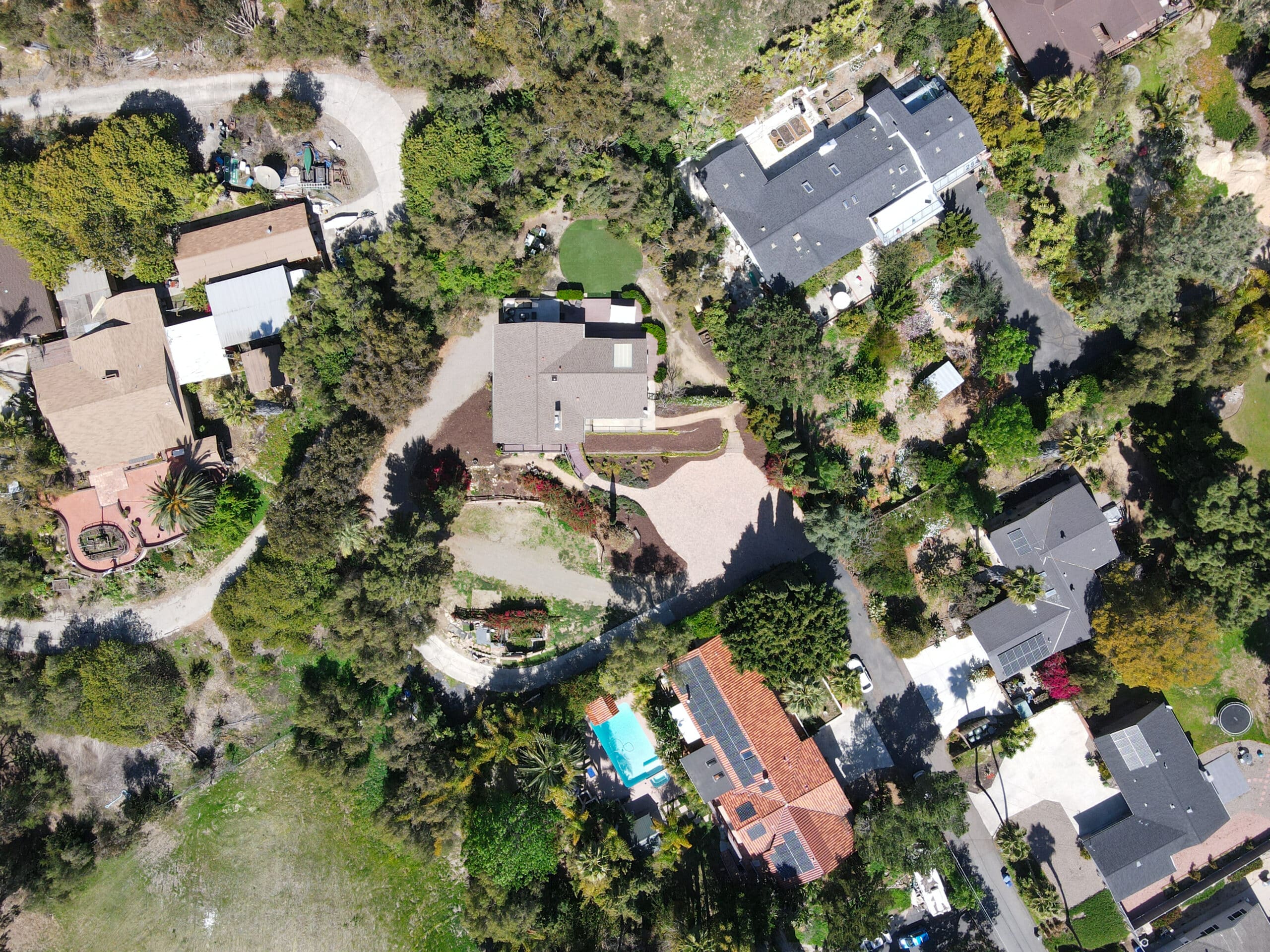Estimated reading time: 16 minutes
In the intricate and high-stakes realm of executive protection, the convergence of skill, strategy, and discretion forms the backbone of effective security operations. This specialized field, constantly evolving against emerging threats and technological advancements, demands more than traditional security measures. It calls for a nuanced approach, combining rigorous risk assessment, advanced surveillance techniques, and proactive crisis management to safeguard individuals whose profiles or positions expose them to heightened risks. This article delves into the core principles and strategies fundamental to executive protection, offering an in-depth exploration of its various components. From understanding the intricacies of threat assessment and risk analysis to mastering the art of advance work and emergency response, the following sections unfold the layers of this complex field. Aimed at security professionals and those interested in the dynamics of high-level protection, this piece presents a comprehensive guide to the essentials of safeguarding high-profile individuals in an ever-changing threat landscape.
Table of contents
Introduction to Executive Protection
Defining Executive Protection
Executive protection (EP) is a specialized field of security operations primarily concerned with the safety of VIPs, dignitaries, executives, and other individuals who may be exposed to elevated personal risk. Unlike standard security services, EP involves a more personalized, in-depth approach, focusing on the comprehensive well-being of the individual. This includes physical safety, reputation management, privacy, and convenience.
The need for executive protection arises from various risk factors such as the individual’s public profile, net worth, geopolitical significance, or specific threats. In today’s complex global landscape, the range of threats has expanded, encompassing everything from physical violence and kidnapping to cyber threats and invasion of privacy.
Executive protection specialists are tasked with a sensitive, challenging role. They must seamlessly blend into the client’s lifestyle, providing security without hindering personal freedom or business activities. Their work involves meticulous planning, constant vigilance, and the ability to respond quickly and effectively. This section explores executive protection’s evolution, scope, and unique aspects, setting the stage for a deeper understanding of this critical field.
Scope and Importance of Executive Protection
Executive protection is a multifaceted discipline, extending beyond physical safety to encompass a broader spectrum of security considerations. It involves understanding and mitigating risks in various physical, digital, and psychological domains. For high-profile individuals, threats can come from diverse sources like organized crime, political extremists, disgruntled employees, or overzealous fans.
The scope of EP includes advance planning for travel and events, residential security, cybersecurity measures, and crisis management. The importance of EP lies not just in responding to immediate threats but also in proactively managing risks to prevent incidents. This involves thorough risk assessments, regular security audits, and staying abreast of potential threats.
Protecting key executives is a matter of personal safety and a business imperative for corporations. Incidents involving senior personnel can have far-reaching consequences on brand reputation, stock prices, and stakeholder confidence. Similarly, for public figures, effective EP is crucial in maintaining their public image and ensuring their ability to perform their roles without fear for personal safety.
Key Challenges in Executive Protection
Executive protection professionals face many challenges shaped by the dynamic nature of the threats and the specific requirements of the individuals they protect. One of the primary challenges is the unpredictable nature of potential threats, which can range from planned attacks to spontaneous incidents. EP agents must be prepared for any eventuality, often in environments they cannot fully control.
Another significant challenge is balancing security with the client’s need for privacy and normalcy. The presence of security personnel should not be intrusive or hinder the daily activities of the protected individual. This requires EP agents to be invisible and omnipresent, blending into the background while maintaining high alertness.
Today’s global nature of business and politics also means that EP operations often have an international dimension. This introduces additional complexities, such as navigating different legal jurisdictions, cultural sensitivities, and language barriers. Moreover, the rise of digital threats means that EP agents must also be adept in managing cybersecurity risks, a constantly evolving field.
EP professionals must continuously update their skills and knowledge in this constantly changing landscape. They must be proficient in various disciplines, including crisis management, emergency medical response, defensive driving, and negotiation tactics. Keeping up with the latest security technologies and methodologies is essential for effective protection in this modern age.
Understanding Threat Assessment

Principles of Threat Assessment
Threat assessment in executive protection is the foundational process of identifying, evaluating, and managing threats against the protected individual. It’s a proactive, systematic approach beyond mere reaction to incidents. Instead, it focuses on preventing them by understanding the nature of potential threats and the context in which they may arise.
This process begins with identifying potential threats, which involves understanding who might want to harm the principal and why. Threat assessment professionals analyze various sources of information, including past incidents, intelligence reports, and social media, to identify potential threats. They consider factors such as motive, capability, and opportunity to understand how likely a threat will materialize.
The next step is evaluating the identified threats to determine their seriousness and likelihood. This involves assessing the threat’s potential impact and the individual’s vulnerability to that threat. The assessment considers various scenarios and possible consequences, enabling security teams to prioritize risks and allocate resources effectively.
Finally, managing threats involves developing and implementing strategies to mitigate identified risks. This can include enhancing physical security measures, improving surveillance and intelligence gathering, and preparing contingency plans for different scenarios. Effective threat management is an ongoing process requiring continuous monitoring and adaptation as situations evolve.
Techniques for Effective Threat Assessment
Effective threat assessment in executive protection relies on analytical techniques, intelligence gathering, and technological tools. Analysts use behavioral analysis to understand the intentions and capabilities of potential threats, often drawing on psychology to assess the likelihood of an individual or group acting on a threat.
Intelligence gathering is another critical component. This involves collecting information from various sources, including law enforcement databases, social media, and public records. Open-source intelligence (OSINT) is particularly valuable, providing a wealth of information that can be used to identify and assess threats.
Technological tools play a significant role in modern threat assessment. Advanced analytics and data mining tools allow security teams to process large volumes of information and identify patterns that might indicate a threat. Social media monitoring tools can track online activities and sentiments, providing early warning of potential risks.
Physical surveillance and reconnaissance are also vital techniques. Surveillance teams monitor the environments around the principal, identifying any unusual activities or potential threats. Technological tools like closed-circuit television (CCTV) and drone surveillance often support this physical monitoring.
Case Studies in Threat Assessment
Analyzing case studies in threat assessment can provide valuable insights into the practical application of these principles and techniques. One notable case involved a corporate executive whom a disgruntled former employee targeted. The threat assessment process began with a thorough analysis of the employee’s past behavior and communications, which indicated a growing hostility towards the executive.
Intelligence gathering played a crucial role in this case. The security team monitored the former employee’s online activities, identifying posts that suggested a plan to confront the executive. This information allowed the team to increase security measures at the executive’s office and residence.
The case also highlighted the importance of collaboration with law enforcement. The security team worked closely with local police to manage the threat, resulting in the arrest of the former employee before any harm could occur.
This case demonstrates the effectiveness of a comprehensive threat assessment in identifying and mitigating risks. It shows how combining analytical techniques, intelligence gathering, technological tools, and effective collaboration can protect individuals from potential threats.
Risk Analysis in Executive Protection
Conducting Comprehensive Risk Analysis
Comprehensive risk analysis in executive protection involves a detailed evaluation of potential security threats and vulnerabilities. This process is essential for developing a robust security strategy that addresses the specific needs and risks associated with protecting the individual. It begins with an extensive assessment of the principal’s lifestyle, work environment, and public exposure. This assessment helps identify potential risk areas, such as residences, workplaces, travel routes, and public appearances.
The analysis also considers the nature of potential threats, including physical attacks, kidnapping, stalking, cyberattacks, and information leaks. Each of these threats requires a different approach and set of mitigation strategies. The risk analysis process evaluates the likelihood of these threats and their potential impact on the individual’s safety, reputation, and privacy.
Another critical aspect of comprehensive risk analysis is the assessment of existing security measures. This includes reviewing the effectiveness of current physical security, cybersecurity protocols, and emergency response plans. Identifying gaps in these areas is crucial for enhancing overall security. The process also involves consulting with various stakeholders, including security personnel, law enforcement agencies, and cybersecurity experts, to gain a well-rounded view of the risks and the best practices to mitigate them.
Incorporating Environmental and Situational Factors
Environmental and situational factors play a significant role in risk analysis for executive protection. Environmental factors include the geopolitical climate, local crime rates, and specific threats pertinent to certain locations or regions. Situational factors involve assessing risks associated with particular events, travel plans, and public appearances. Understanding these factors is crucial for tailoring security measures for specific situations and environments.
For instance, operating in high-risk regions requires more security protocols than in safer areas. Similarly, high-profile events like international conferences or public speeches present different challenges than private meetings or routine office work. Each situation demands a unique security approach, considering crowd control, media presence, and emergency evacuation routes.
Incorporating these factors into the risk analysis process involves conducting thorough research and reconnaissance. Security teams assess potential risks in different environments and situations, gathering intelligence and liaising with local security agencies. This helps develop a comprehensive security plan that addresses specific risks associated with various environments and conditions the principal might encounter.
Tools and Technologies in Risk Analysis
Technology advancements have significantly enhanced executive protection teams’ capabilities in conducting risk analysis. These tools and technologies enable security professionals to gather, analyze, and interpret vast amounts of data, providing a more accurate assessment of potential risks.
Geospatial intelligence (GEOINT) tools, for instance, offer valuable insights into the geographical aspects of security planning. They help analyze travel routes, identify safe locations, and plan emergency evacuation paths. Surveillance technologies, including CCTV systems, drones, and advanced sensors, play a crucial role in monitoring the physical environment around the principal.
Cybersecurity tools are essential for protecting the digital footprint of high-profile individuals. This includes secure communication platforms, malware detection systems, and network security protocols. Data analytics and artificial intelligence (AI) in risk analysis are also on the rise. These technologies can process and analyze large datasets, identifying patterns and anomalies that may indicate potential security threats.
Incorporating these tools and technologies into the risk analysis process enhances the effectiveness and efficiency of executive protection strategies. They provide a more comprehensive view of potential risks, enabling security teams to develop more informed and proactive security measures.
Advance Work in Executive Protection

The Fundamentals of Advance Work
Advance work is a critical component of executive protection, involving thorough preparation and planning for any location or event the principal will attend. This process is essential in mitigating risks and ensuring all activities are safe and operate smoothly. Advance work is conducted by a team of specialists who visit and assess all venues, routes, and locations before the principal’s arrival.
The critical aspects of advance work include venue assessments, route planning, and coordination with local authorities and security personnel. Venue assessments involve checking the physical security of a location, identifying entry and exit points, and understanding the layout to manage potential risks effectively. Route planning is crucial for safe and efficient travel, considering factors like traffic patterns, alternative routes, and proximity to medical facilities.
Advance teams also liaise with local law enforcement and security agencies to ensure a coordinated effort. They gather intelligence about regional threats, understand the capabilities of local responders, and establish communication protocols. The success of advance work lies in its meticulous attention to detail and ability to anticipate and plan for various scenarios.
Techniques and Best Practices
Practical advance work requires technical skills, local knowledge, and anticipating potential risks. One of the fundamental techniques is conducting a thorough risk assessment of each location and event. This includes identifying vulnerabilities and potential threat sources, assessing crowd control measures, and evaluating emergency response capabilities.
Communication and coordination are crucial in advance work. This involves establishing clear lines of communication with all stakeholders, including venue managers, security personnel, and local authorities. Regular briefings and debriefings help ensure everyone is on the same page and aware of their roles and responsibilities.
Another best practice in advance work is conducting rehearsals and walk-throughs. These exercises help security teams familiarize themselves with the environment and practice their response to various scenarios. Technology also plays a significant role, with tools like mapping software, communication devices, and surveillance equipment being integral to advance work.
Real-World Examples of Successful Advance Work
Examining real-world examples of successful advance work can provide valuable insights into the effectiveness of different techniques and approaches. For instance, during a high-profile political summit, the advance work involved coordinating with multiple security agencies, conducting extensive venue assessments, and establishing secure communication networks.
In another example, the advance team for a corporate executive’s international trip conducted detailed assessments of all hotels, meeting locations, and transportation arrangements. They coordinated with local security firms, established emergency contact protocols, and identified hospitals and medical facilities along all routes.
These examples demonstrate the importance of advance work in mitigating risks and ensuring the safety of high-profile individuals. They show how thorough preparation, attention to detail, and effective coordination can successfully manage complex security challenges.
Protective Surveillance and Counter-Surveillance
Understanding Protective Surveillance
Protective surveillance in executive protection is a covert method used to monitor potential threats to a principal without their knowledge. This technique is particularly effective when overt security measures could be intrusive or attract unwanted attention. The primary goal of protective surveillance is to create a secure environment around the individual by observing from a distance, thereby minimizing disruption to their daily activities.
This approach involves deploying highly trained surveillance teams who blend into the environment while closely monitoring the principal and their surroundings. These teams are skilled in recognizing signs of hostile surveillance, unusual behavior, and potential threats. Protective surveillance is often used with other security measures, providing additional protection.
Critical elements of effective protective surveillance include understanding the principal’s routine and environment, employing advanced observation techniques, and having a deep knowledge of surveillance tactics. The teams use a combination of foot, mobile, and technical surveillance to cover all aspects of the principal’s movements and activities.
Counter-Surveillance Strategies
Counter-surveillance is a proactive security measure used to identify and mitigate the risks of being watched or followed. In executive protection, counter-surveillance is employed to detect and deter potential attackers or stalkers who may be surveilling the principal. The objective is to prevent hostile acts by identifying and neutralizing threats before they materialize.
Counter-surveillance teams use a variety of tactics to identify whether the principal is under surveillance. These include conducting surveillance detection routes (SDRs), using decoys, and employing technical counter-surveillance measures like bug sweeping and electronic surveillance detection. SDRs are planned movements designed to identify whether someone is following the principle.
Another critical aspect of counter-surveillance is maintaining operational security (OPSEC). This involves protecting sensitive information about the principal’s movements, routines, and security measures. By controlling this information, the protection team can prevent adversaries from gaining an advantage.
Integrating Surveillance Techniques in Executive Protection
Integrating protective surveillance and counter-surveillance techniques forms a comprehensive approach to executive protection. This integration allows security teams to provide high protection while maintaining discretion and minimizing intrusion into the principal’s life.
Effective integration requires seamless coordination between different teams and a clear understanding of their roles and responsibilities. Communication is critical, with teams regularly sharing information and updates on potential threats and unusual activities. This collaborative approach ensures that all aspects of the principal’s security are covered and potential threats are identified and addressed promptly.
Technology also plays a vital role in this integration. Advanced communication systems, surveillance equipment, and data analysis tools enable teams to share real-time information and respond quickly to potential threats. Training and regular exercises are also essential to ensure that all team members are skilled in protective and counter-surveillance techniques and can work together effectively under various scenarios.
Emergency Response and Crisis Management

Preparing for Emergency Situations
In the realm of executive protection, the preparation for emergencies is pivotal. This preparation is not limited to responding to immediate physical threats but extends to managing a range of crises, including medical emergencies, natural disasters, and reputational threats. Effective emergency response requires meticulous planning, which involves understanding the principal’s risk profile and tailoring emergency procedures accordingly.
Key aspects of emergency preparation include developing and regularly updating emergency response plans. These plans should detail protocols for various scenarios, such as evacuation procedures, secure transportation routes, and designated safe rooms. Additionally, ensuring that all team members are trained in first aid and emergency medical response is essential, as immediate medical care can save lives.
Regular drills and scenario-based training exercises ensure that the security team and the principal are prepared to respond effectively in an emergency. These exercises help identify potential weaknesses in emergency plans and provide opportunities for improvement. They also familiarize the principal and staff with emergency procedures, reducing panic and confusion during a real crisis.
Crisis Management Principles
Crisis management in executive protection is about handling high-pressure situations effectively while ensuring the safety and well-being of the principal. The core principles of crisis management include rapid assessment, decisive action, and clear communication. In a crisis, the first step is to quickly assess the situation, understand its severity, and determine the best course of action.
Effective crisis management requires a calm and composed approach. Decision-making should be based on solid intelligence and situational awareness. The protection team must be able to quickly adapt to changing circumstances and adjust their plans as needed.
Communication is critical in managing a crisis. This includes internal communication within the security team and with the principal, their family, and external entities such as law enforcement and medical personnel. Clear and timely communication ensures that everyone involved is informed and aligned with the response strategy.
Case Studies in Emergency Response
Analyzing real-world case studies provides valuable insights into the practical application of emergency response and crisis management in executive protection. One notable case involved a natural disaster where a high-profile individual was caught in a severe earthquake while traveling. The security team’s prompt response, based on their emergency plan, facilitated the safe evacuation of the principal from the affected area.
In another instance, a corporate executive faced a reputational crisis due to leaked sensitive information. The crisis management plan included immediate security measures to protect the individual from potential physical threats and strategies to manage the reputational fallout. This integrated approach, combining physical security with crisis communication strategies, helped mitigate the impact of the crisis.
These case studies demonstrate the importance of preparedness, adaptability, and effective emergency leadership. They highlight the need for comprehensive emergency response plans and the ability to manage crises effectively to ensure the safety and security of high-profile individuals.
Conclusion
In conclusion, the executive protection field is a complex and dynamic arena where the stakes are invariably high, and the margin for error is minimal. This comprehensive exploration of its various facets underscores the multifaceted nature of protecting high-profile individuals. From the nuanced art of advance work and the discreet yet vigilant practices of protective surveillance and counter-surveillance to the imperative of robust emergency response and crisis management, each aspect plays a pivotal role in forming a seamless security envelope around the principal.












